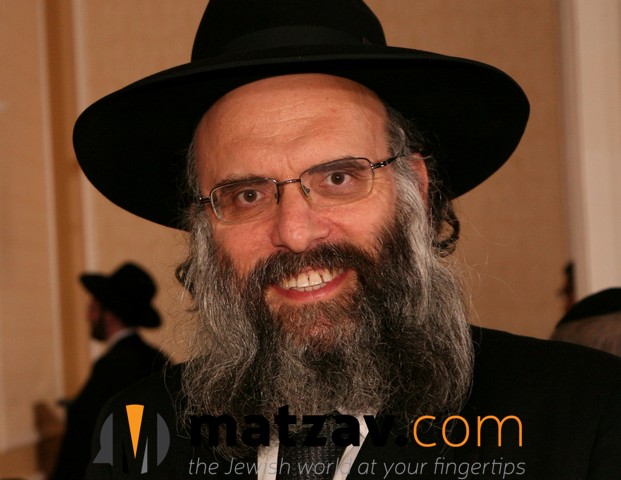
By Rabbi Yehoshua Berman
1 – Who is Chur? ובצלאל בן אורי בן חור לח:כב
The pasuk is making a point to trace Betzalel’s lineage back to his grandfather, Chur. This is not the first time we discover Chur. At the end of parshas Beshalach (17:12), Aharon and Chur held up Moshe Rabbeinu’s arms while Yehoshua led the battle against Amaleik. At the end of parshas Mishpatim, Moshe Rabbeinu tells the People that, while he is gone, anyone who has a din Torah that needs to be settled should bring it to Aharon and Chur. Also in parshas Ki Sisah, Chur comes up. Rashi brings the Medrash that what Aharon saw (32:5) is the murder of Chur when he rebuked the People for wanting to make the eigel ha’zahav.
Who was Chur? He was the son of Miryam and Kaleiv. Rashi tells us so three times! In Beshalach, in Mishpatim, and also in Vayakhel (35:30) when the pasuk mentions that Betzalel is the grandson of Chur. Throughout Shas, Rashi repeats explanations and does not rely on your memory. Once it’s two or three daf away from where he first explained it, Rashi does not hesitate to explain again. Sometimes, if it is a lengthy exposition, he’ll tell you, “I already explained this in such and such place.” That is certainly quite reasonable. Otherwise, though, he reiterates things often and does not rely on us to remember what was said. Rashi was Rashi. As such, it is not really such a kashya that Rashi tells us who Chur was three times. However, it is possible that there is a specific significance to the fact that Rashi “introduces” us to Chur three times.
The three times that Chur is mentioned being involved in something represent three different capacities that he filled. The first one, chronologically speaking, is when Moshe Rabbeinu appointed him – together with Aharon – as the authority for dinei Torah. True, it was before Matan Torah, but they still had what they had. Sheva mitzvos, Shabbos, Parah, and certain dinim. And those halachos needed arbitration. That was Chur functioning in the capacity of koach ha’Torah.
Next, is the capacity of the power of teffilah. The Medrash says that Moshe va’chaveirav went up to daven for Klal Yisrael when they fought against Amaleik. That is quite a statement. The Rambam makes clear that Moshe Rabbeinu was the adon ha’neviim – possessed of his singular manifestation of nevuah – already from the time he went to Mitzrayim to redeem the People. It makes sense that once he was the adon ha’neviim, he didn’t have any “friends”. Yet because they davened together with him, they are called his friends. And who were those friends? The mefarshim explain it is referring to Aharon and Chur. From this we see Chur’s capacity of teffilah.
Finally, Chur embodied the power of mesiras nefesh. When he saw that the People were going to sin with the eigel ha’zahav, he took a firm stand against it. And by so doing, he literally gave his life for kvod Shamayim. Chazal tell us – there is at least one opinion in Chazal that says this explicitly – that the construction of the Mishkan was an atonement for the sin of the eigel ha’zahav. Because Chur was moser nefesh to try to stop the eigel ha’zahav from occurring, he merited that his grandson – Betzalel – was the one who led the construction of the Mishkan.
(Audio recording, available here)
———————–
2 – Tzarich Iyun Gadol on the Rambam
ויעשו על החשן שרשרת…ויתנו…על שתי הטבעת…ואת שתי קצות…נתנו על שתי המשבצות לט:טו-יח
A few weeks ago, in parshas Tetzaveh (28:14), we discussed the machlokes between Rashi and the Rambam regarding the sharsheros, the golden cords that connected the shoulder straps of the eifod to the choshen. Rashi holds that there was only one set of sharsheros, whereas from the words of the Rambam (Hilchos Klei Ha’Mikdash 9:8-10) it is clear that he holds that there were two separates sets of sharsheros.
Paranthetically, the Rambam employs the word sharshos when describing the golden cords of the choshen, but when discussing those of the eifod, he calls them sharsheros. It is possible that he uses different terms because he holds they were two different sets of golden cords. However, it is also possible that the discrepancy is a printing error.
Another possible diyuk in the Rambam is that which he says, “the edge of the cords of the choshen are attached to the rings of the shoulder straps of the eifod, and the cords on the rings of the shoulder straps of the eifod are lowered until they reach the upper rings of the choshen in order that they be firmly connected to one another and the choshen will not detach from the eifod.” The possible implication is that the second set of golden cords is there for the purpose of ensuring that the lav of lo yizach ha’choshen is not violated. In other words, there is the basic structure of the vestments, which includes gold cords that connect the choshen and the eifod to one another – no different to any other specification of the bigdei kehuna – and then there is another set of cords which are there to serve the sole purpose of ensuring that they not detach from one another.
Once on the topic, it is noteworthy to mention that, as far as I am aware, there is no sugya that addresses the lav of lo yizach ha’choshen. Other than the fact that the Gemara in Maseches Makkos says that one who is meziach the choshen from the eifod gets malkos, there is no discussion about it. So, we can ask, what comprises a violation of this lav? If one lifts the choshen off the eifod without disconnecting any of the golden cords or techeiles strings, is that already a violation? Or, what if someone cuts just one of the techeiles strings – is that a violation? When the Rambam expresses this lav, he says “one who is meziach and mefareik” (ibid. 9:10). What is the word mefareik coming to add? Yeish l’ayein.
The main reason we are mentioning this machlokes again, though, is to point out that the pesukim here in Pekudei are very difficult to understand according to the Rambam. Clearly, only one set of sharsheros is being described in these pesukim. According to the Rambam, why should the description of the execution of the making of the begadim not reflect the double set of sharsheros just as the pesukim in Tetzaveh do when commanding its creation? I am confounded by this question, and I have not seen anyone who addresses it.
(Audio recordings, available here and here)
———————-
3 – A Brisker Ramban
ויתנו את הפעמנים בתוך הרמנים…בתוך הרמנים לט:כה
Back in parshas Tetzaveh (28:33), there is a machlokes between Rashi and the Ramban regarding the paamonim and rimonim (bells and pomegranates) of the meil. Rashi holds that they alternated: when the pasuk says that the bells were in the rimonim all around, it means that each bell was sandwiched in between two rimonim. The Ramban, on the other hand, holds that the rimonim were woven with a hollow inside into which a bell would be inserted.
From the pasuk here in Pekudei, the Ramban brings support for his position. Why, he asks, does the pasuk repeat the fact that the bells were “in” the rimonim? To indicate that the bells had to be inserted into the hollows of the rimonim while still b’talush, before the former were sewn onto the meil.
This is what we would call a “Brisker” Ramban. The first point of contention between Rashi and the Ramban concerns the tzuras ha’beged, the specific form of the meil. The Ramban here, though, is adding another dimension: a din in asiyas ha’beged, a requirement insofar as the manufacture of the meil is concerned.
(Audio recording, available here)
———————————–
4 – Quote of the Week
“That’s amazing…but, shhh, don’t tell anyone.”
———————————-
5- Featured Story
One time, I was supposed to go to Rav Twersky’s house. However, all my roomates had left my dirah, and the last one out must have locked the door. Like almost all doors in Israel, the door of my dirah requires a key to open it from the inside as well as the outside. The problem was, I couldn’t find my key. I was stuck in my dirah for quite some time before I finally found a way out. When I did finally arrive at Rav Twersky’s home, I explained the reason for my lateness. Rav Twersky was clearly agitated by my account, and he told me, “One is not allowed to live like that. It is dangerous!”
(Reb Yosef Orman)
Read more divrei Torah and stories of Rav Twersky zt”l on VayigdalMoshe.com!
~ CLICK HERE TO RECEIVE THESE WEEKLY DIVREI TORAH DIRECTLY TO YOUR INBOX ~
~For downloadable Pdf, click here (two pages, double sided) or here (one page, double sided)~
{Matzav.com Newscenter}











